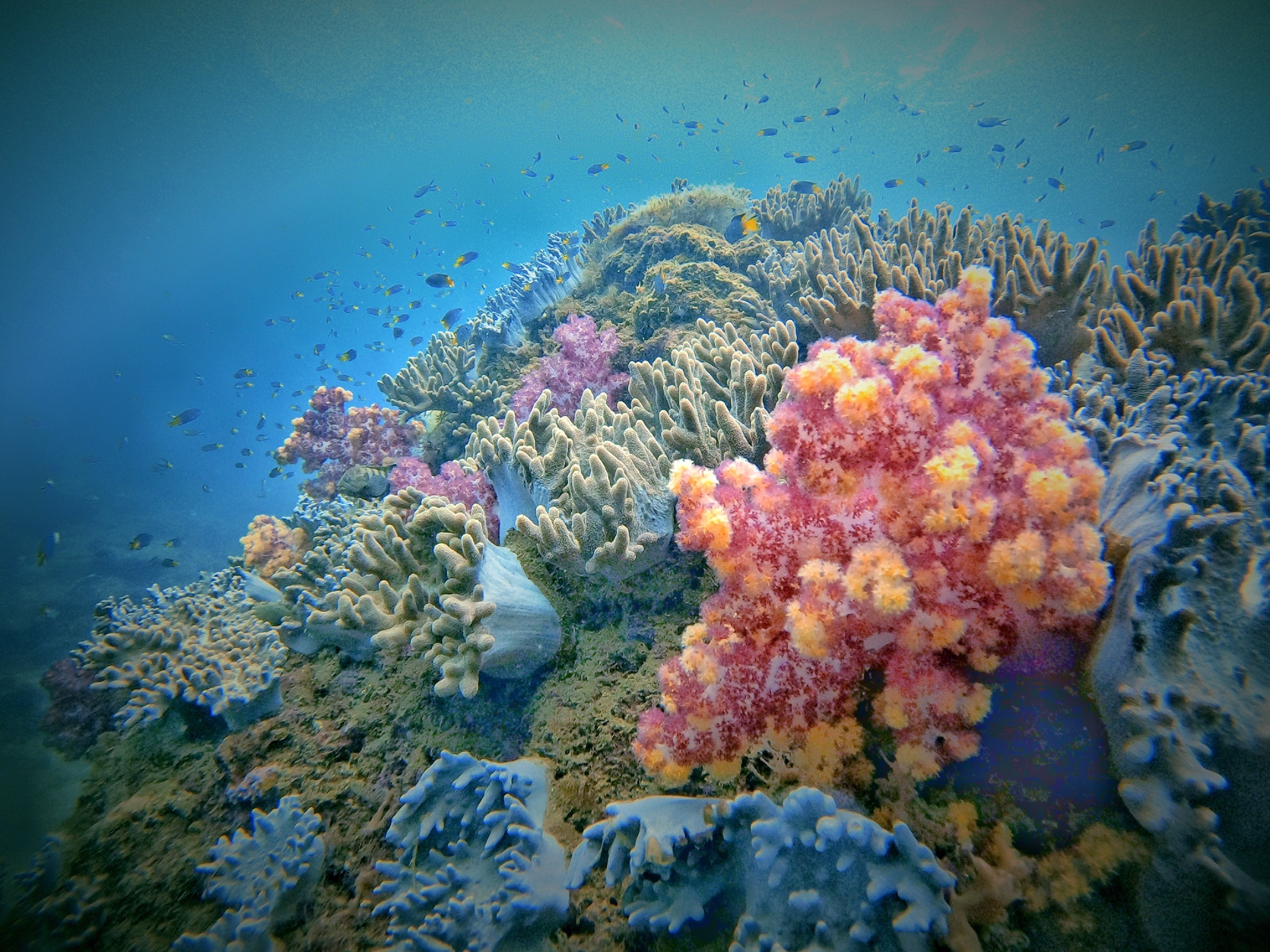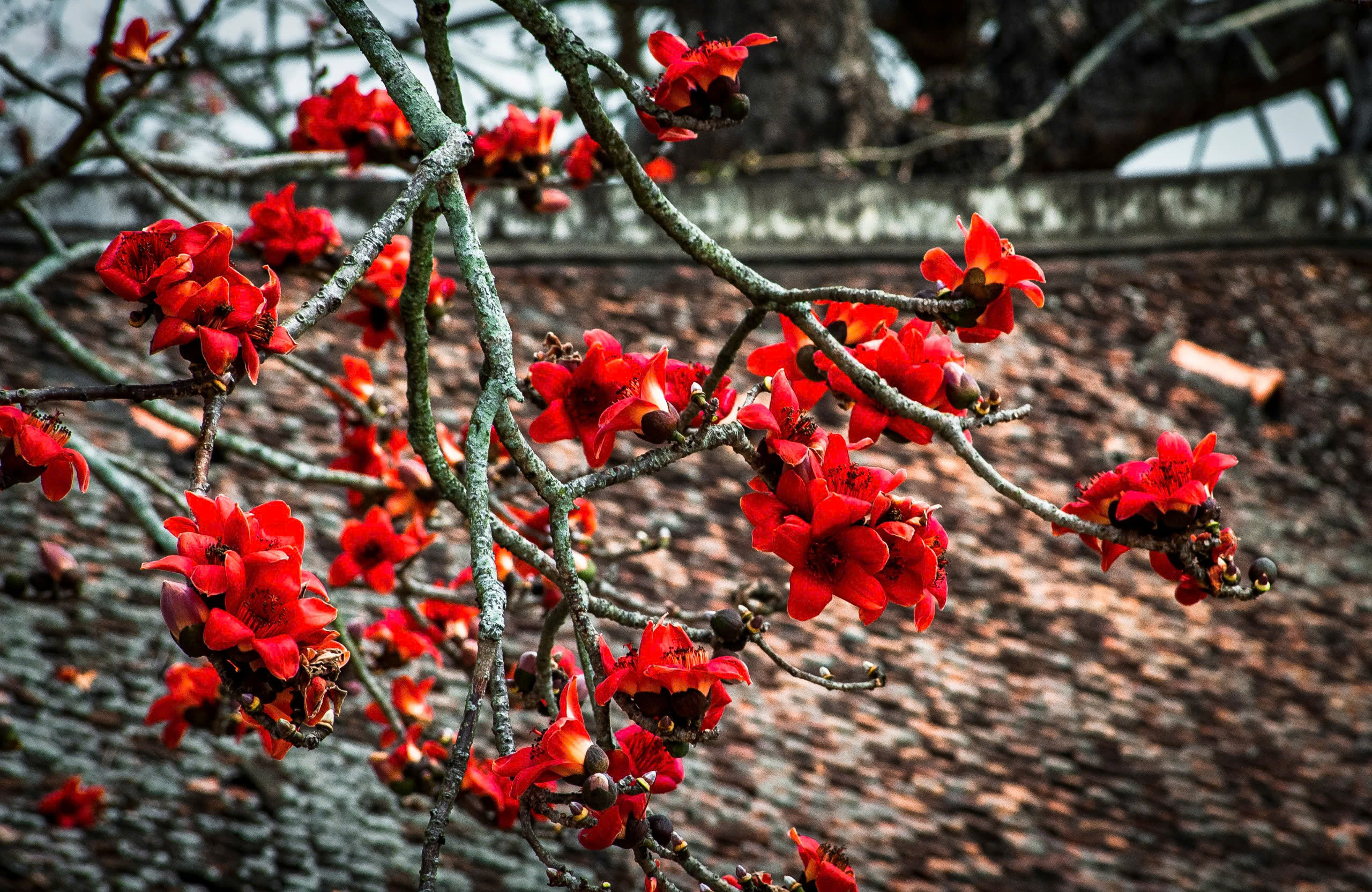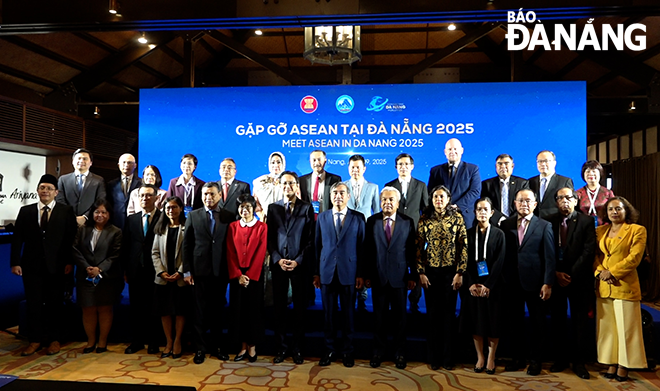Da Nang blessed with diverse marine ecosystems
The colourful underwater life highlights thousands of species of vibrant corals, seashells, and marine creatures. Hard coral reefs have developed over hundreds of years, with each can be 3-4m wide. Underwater corals look like tropical forests on land, a place to store biodiversity, supporting many types of fish and other marine creatures.
 |
| Beautiful coral reefs have a major impact on the sustainability of marine ecosystems. |
The landscape will make you unable to leave, with beautifully coloured coral reefs creating unique shapes, from lush green coral ‘forests’ to towering coral ‘walls’. Besides watching corals, you can admire colourful fish and have the opportunity to explore rare species.
Preserving coral reefs
At 6:00am on a day in early August, we were at Man Thai Beach, Son Tra District, groups of people eagerly pulling colourful SUPs, crossing the soft sand under their feet, heading towards the distant sea. In the group of SUP paddlers that day, there were about 20 professional divers, who are experienced in preserving coral reefs in the waters off the Son Tra Peninsula.
After moving by paddle board to the coral reef area in Hon Sup, these divers began diving to find trash, remove the nets stuck around the coral reefs and then brought them to shore for processing. After many years of cleaning trash, removing the ropes and ghost nets causing damage and breakage, the coral reefs are now well restored, turned healthy with eye-catching colours.
Talking about this favourite job, Mr. Dao Dang Cong Trung, the Director of Man Thai Trading - Tourism Company Limited, happily said: “Under the deep sea is another world full of colours with thousands of species of coral and vibrant marine life. Hard coral reefs develop over hundreds of years, with a layer measuring 3-4m wide. Coral reefs under the sea are like tropical forests on land, a place to store biodiversity, supporting many types of fish and other marine creatures. The landscape will make you unable to leave, with coral reefs of beautiful colours creating unique shapes, from lush green ‘coral forests’ to towering coral ‘walls’. Besides watching corals, you can see colourful fish and have the opportunity to explore rare species”.
Along with the work of preserving coral reefs, Trung’s group also conducted in-depth research on the marine ecosystem here, stating that coral reefs in the coastal waters off the Son Tra Peninsula are mainly fringing reefs.
The total area of coral reefs in the entire research area is 46.9 hectares; 177 species of coral belong to 17 families and 52 genera have been identified in the coastal waters off the Son Tra Peninsula.
The average coverage of live coral at the survey sites is about 23% of the total bottom area. To date, 130 species of fish have been recorded in the coral reef.
The marine ecosystem in the Son Tra Peninsula also has a sparsely distributed seagrass bed system, scattered in a leopard-like pattern at Bai Nom (Bai Ran) and Bai But with a total area of about 1ha.
According to the Department of Sea, Islands and Environment, with a coastline of more than 89km, Da Nang has two main seafood exploitation areas: Da Nang Bay and the south of the Son Tra Peninsula. There are 104.6 hectares of coral reefs that are home to valuable nearshore aquatic species such as lobsters, groupers, and silver pomfret.
According to the recommendations of many experts, Da Nang Bay and the southern area of Son Tra Peninsula have coastal coral reefs that are home to aquatic species and resources of the city. However, if tourism is developed excessively in this area, it will seriously affect the existence and development of coral reefs, causing negative changes to the marine ecosystem. Recently, the relevant authorities have taken positive actions to protect coral reefs and the marine environment in this area.
Sustainable development of marine economy
With a regard to aquatic resources in coastal areas, the Da Nang Department of Agriculture and Rural Development has proposed many solutions to protect aquatic resources and the tourism environment in Da Nang such as restoring ecosystems and creating habitats by releasing artificial reefs, creating suitable caves and habitats for aquatic species to live and reside.
At the same time, heed has been paid to promoting public awareness of protecting environmental resources and exploiting resources sustainably; strengthening the management and protection of coral reefs and ecosystems in the Son Tra Peninsula; improving the quality of community-based management models; planning and construction, licensing for exploitation areas; regulations on fish seed sources off the Son Tra Peninsula.
The Department of Seas, Islands and Environment stated that conserving biodiversity, marine ecosystems, promoting green growth, and sustainable development of the marine economy are special strategic goals. The core of the sustainable marine economy is socio-economic development without harming or degrading marine ecosystems and the marine environment. A smart, integrated approach to climate is to focus on ‘nature-friendly’ solutions.
“Expanding and managing marine protected areas, together with developing appropriate coastal infrastructure, will be important factors in protecting coastal communities and marine habitats. This can support increased fisheries production, better mitigation and adaptation to climate change, protection and restoration of biodiversity and local marine cultural values,” said Mr. Vo Thanh Chi, the Deputy Director of the Department of Seas, Islands and Environment.
In Viet Nam, and Da Nang in particular, the livelihoods of people and fishermen in coastal areas depend directly on natural marine capital. The decline in ecosystem services will directly affect the energy, food, safety and livelihoods of the majority of the population in coastal areas. Marine protected areas (mentioned in the 2017 Fisheries Law) are considered an effective “tool” in conserving biodiversity, enhancing ecosystem resilience, and protecting endangered species. In addition, they also play an important role in protecting and providing opportunities for aquatic species to live and reproduce.
Marine reserves are also places for education and scientific research, organising tourism activities and providing livelihoods for local communities, especially those living in and around marine reserves. In an increasingly pressured living environment due to economic and environmental issues, closeness to nature, including the sea, is a positive trend. The economic value of marine reserves from sightseeing and tourism activities is enormous, so it is necessary to promote them in conjunction with conservation and preservation for long-term sustainability.
Reporting by KHANH HOA - Translating by A.THU








